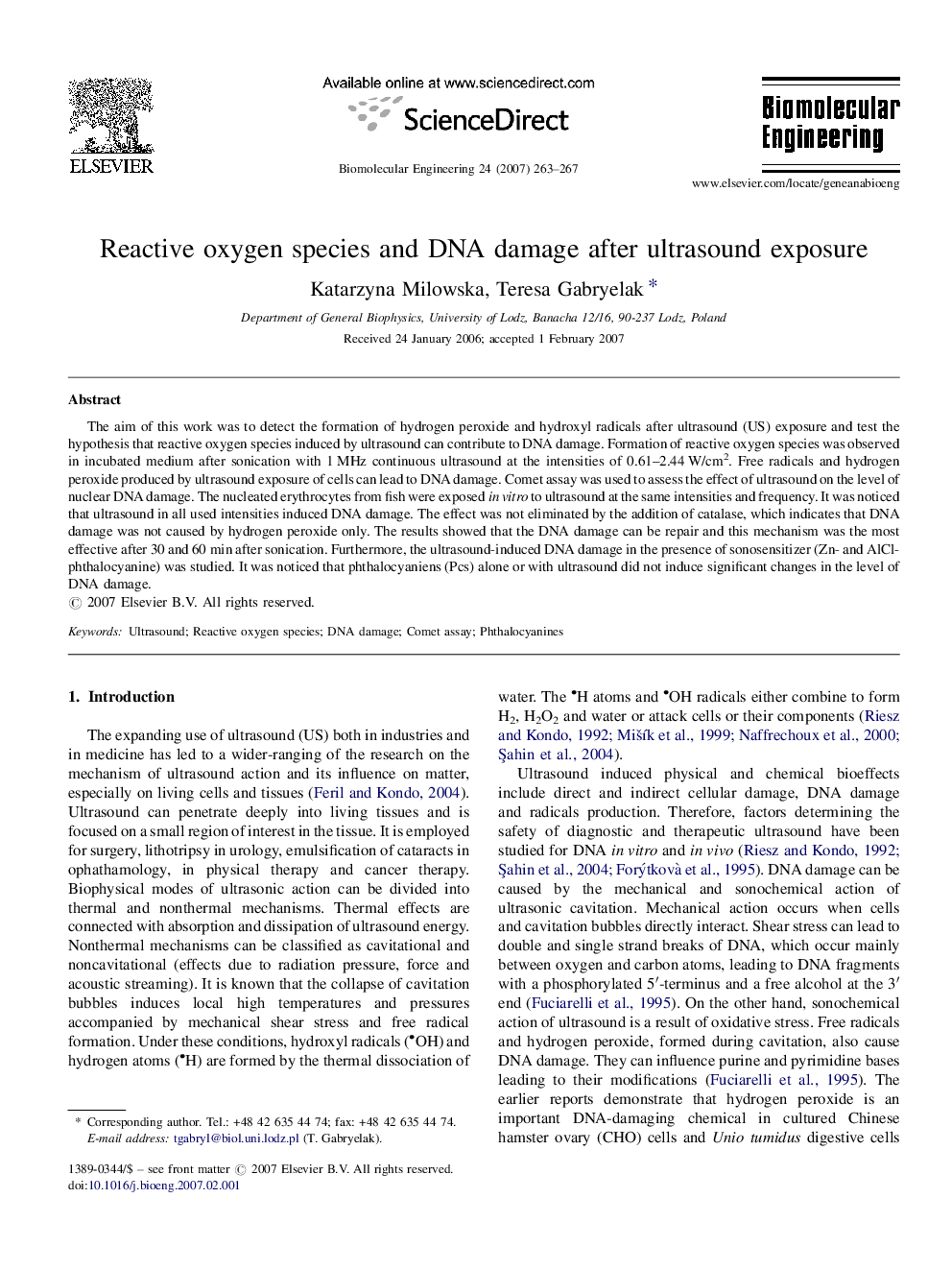| Article ID | Journal | Published Year | Pages | File Type |
|---|---|---|---|---|
| 14100 | Biomolecular Engineering | 2007 | 5 Pages |
The aim of this work was to detect the formation of hydrogen peroxide and hydroxyl radicals after ultrasound (US) exposure and test the hypothesis that reactive oxygen species induced by ultrasound can contribute to DNA damage. Formation of reactive oxygen species was observed in incubated medium after sonication with 1 MHz continuous ultrasound at the intensities of 0.61–2.44 W/cm2. Free radicals and hydrogen peroxide produced by ultrasound exposure of cells can lead to DNA damage. Comet assay was used to assess the effect of ultrasound on the level of nuclear DNA damage. The nucleated erythrocytes from fish were exposed in vitro to ultrasound at the same intensities and frequency. It was noticed that ultrasound in all used intensities induced DNA damage. The effect was not eliminated by the addition of catalase, which indicates that DNA damage was not caused by hydrogen peroxide only. The results showed that the DNA damage can be repair and this mechanism was the most effective after 30 and 60 min after sonication. Furthermore, the ultrasound-induced DNA damage in the presence of sonosensitizer (Zn- and AlCl-phthalocyanine) was studied. It was noticed that phthalocyaniens (Pcs) alone or with ultrasound did not induce significant changes in the level of DNA damage.
